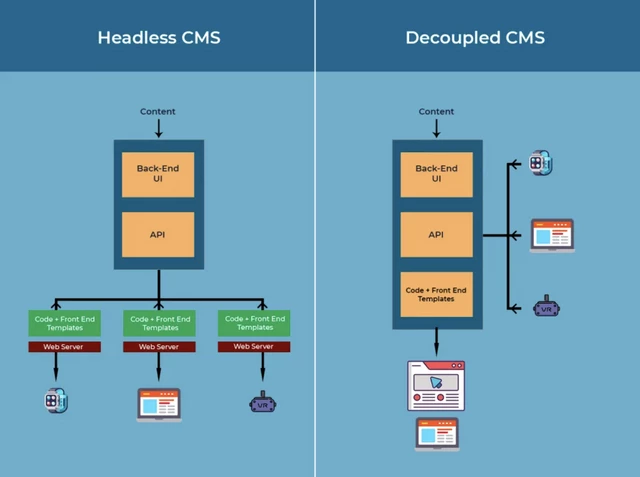Although they are frequently used interchangeably, Drupal decoupled and headless are not the same in terms of CMS design. These systems differ in whether the presentation layer, i.e. the head, is either connected or decoupled from the body or the back-end application. When developing modern apps, it's important to know the distinctions between decoupled and headless CMS designs as well as their benefits and drawbacks to choose the right one for your needs.
What Is Meant by Headless Drupal?
Headless Drupal is an approach for creating websites where Drupal 10 acts as the backend system. The frontend, which the client sees, is developed using different technologies and interacts with Drupal through an API.
That is where the term "headless" comes from; instead of having a top layer (the head), Drupal simply exposes the APIs that the frontend consumes and uses as content sources.
Different frameworks and programming languages can be used to build the frontend. However, this will typically be Javascript, PHP, or any other.
What Is Decoupling in Drupal?
Decoupling in Drupal is like dividing the brain of your website into two separate parts: one part is in charge of producing and storing content, and the other delivers that content to users' devices. The key benefit of this strategy is that it permits quick content delivery and flexibility in how the information is displayed.
A decoupled CMS houses the content management system and the front-end application separately; they communicate via an API. When content is developed and edited in the back end, it can then be supplied to any front-end design on any device or channel.
Although the front-end and back-end apps run separately from one another, they are still closely linked. The front-end CMS design is predetermined with a specific delivery environment, but it can be adjusted to suit your needs.
Decoupled vs Headless Drupal Comparison
For a better understanding of the differences between decoupled and headless Drupal 10, consider decoupled as proactive and headless as reactive. Decoupled Drupal prepares the content on the back end and then proactively provides and presents structured content to different channels.
On the other side, a headless CMS is a content-only data source without the ability to deliver material to an end user on its own. Although content is created and managed, it remains idle, waiting for an API to access it and distribute it to programs and other systems.
Regardless of the type, every Drupal option has its advantages and disadvantages, and some are more suited to particular situations than others. There is no one strategy that is better than another, and your particular business's needs will determine the approach that will work best for you.


No comments yet